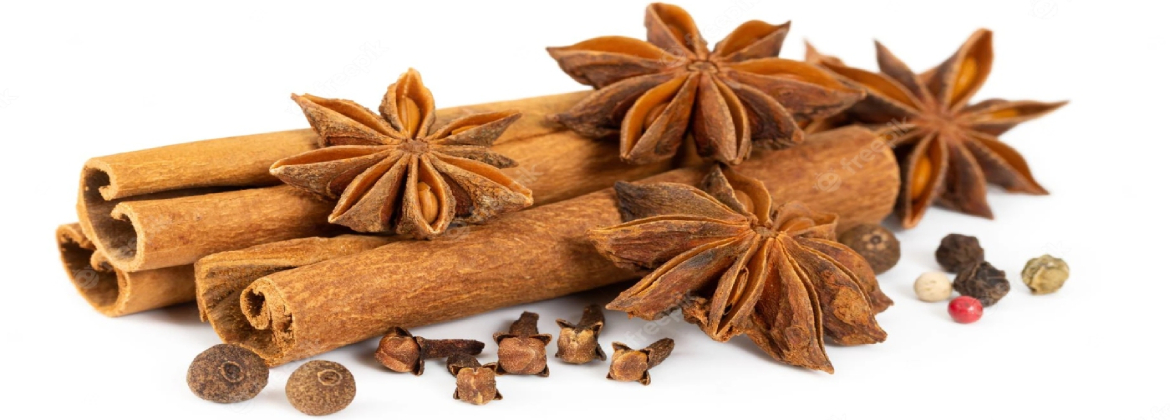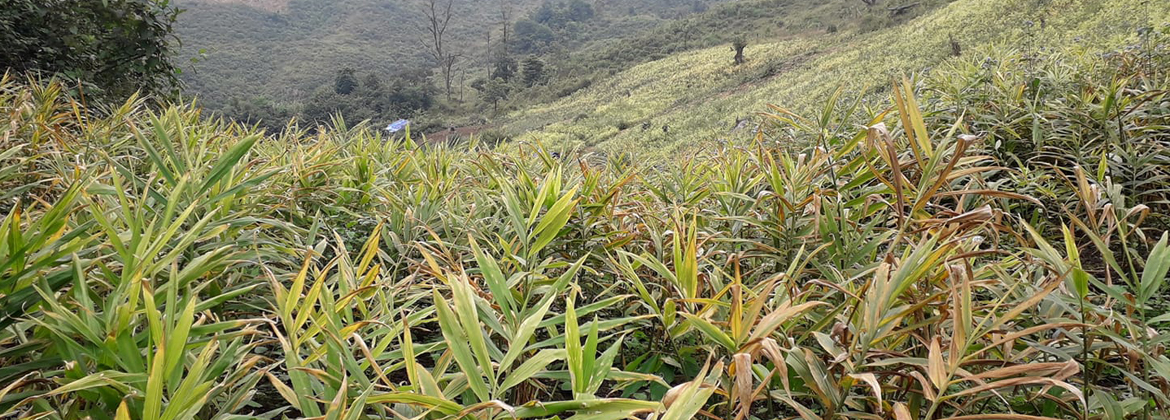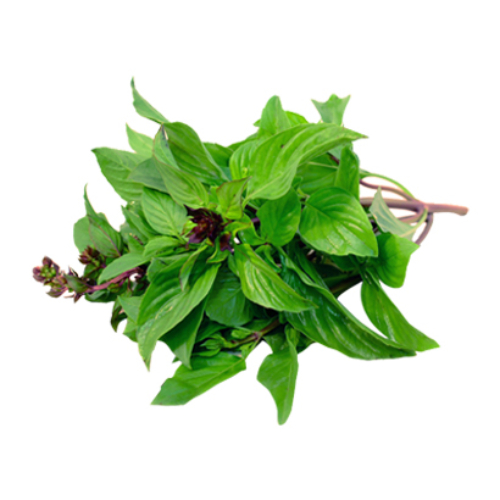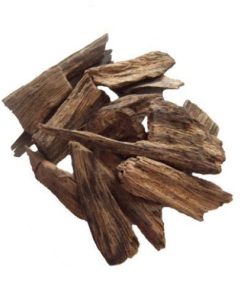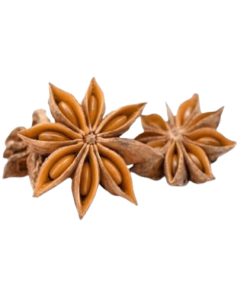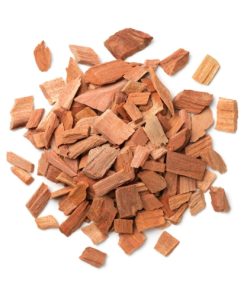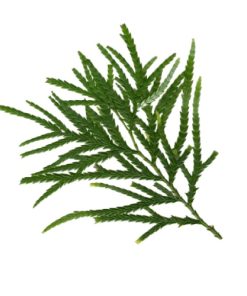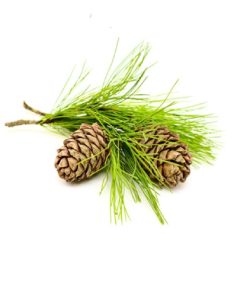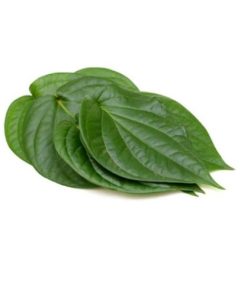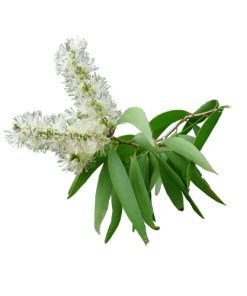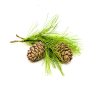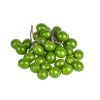SWEET BASIL OIL
Specification:
Botanical name: Ocimum Basilicum
Cultivation method: Natural grown
Country of Origin: Vietnam
Extraction Method: Steam Distilled
Plant Part use: Leaves
Appearance: Clear, Mobile Liquid
Colour: Pale yellow
Relative density at 20℃: 0.910 – 0.985
Refractive index at 20℃: 1.500 – 1.525
Optical rotation at 20℃: – 6 to +2
Main component: Methyl chavicol: 70 to 90%, 1-8-cineole: 1 to 5%, linalool: 0.5 to 3%
110 $
Plant Description
Basil Oil (Methyl Chavicol (also known as Estragole) is distilled from the botanical Ocimum basilicum L. The plant is typically grown and harvested for its leaves, which are popular around the world in many food dishes. There are a number of chemotypes available in this family and this variety is high in Methyl Chavicol (also known as Estragole), which can typically be around 85% of the component mixture. Estragole is used in perfumes and as a food additive for flavour. Estragole is often isolated and converted to anethole using potassium hydroxide.
Sweet Basil originates from Vietnam only. The plant is an annual hairy herb growing up to 1 meter (3 feet). The flowers range from white to pink, depending on the species and attract swarms of bees in summertime. Basilicum comes from the Greek word ‘Basilicos’ meaning ‘king’ or ‘royal’.
Sweet Basil Oil Properties:
The oil has a watery viscosity and is pale greenish-yellow in color.
The aroma is clear, light and peppery and gives a sweet, green top note to blends.
Relative density at 20℃: 0.920 – 0.983
Refractive index at 20℃: 1.501 – 1.525
Optical rotation at 20℃: – 7 to +2
Main component: Methyl chavicol: 70 to 90%, 1-8-cineole: 1 to 5%, linalool: 0.5 to 3%
Uses Sweet Basil Oil
Basil oil is a good tonic for the treatment of nervous disorders and stress related headaches, migraines and allergies. It is used to clear the mind and relieve intellectual fatigue, while giving clarity and mental strength.
It has a beneficial action on the respiratory tract and is often used for asthma, bronchitis and sinus infections. It furthermore is also effective in cases of constipation, nausea, vomiting and cramp, and is also good when used for menstrual problems.
Due to the emmenagogue properties, it is often used to relieve scanty periods and normalizing menses.
It helps to minimize uric acid in the blood, thus relieving gout. It is useful in arthritis as well and when used on the skin, it helps to control acne. In general, it refreshes the skin and can also be used on insect bites.
Precautions
Possible skin sensitivity. Keep out of reach of children. If you are pregnant, nursing, or under a doctor’s care, consult your physician. Avoid contact with eyes, inner ears, and sensitive areas.
Specification

CERTIFICATE OF ANALYSIS
Number: 10/2023 HQUE
Product name |
ORGANIC SWEET BASIL OIL |
Botanical Source |
Ocimum basilicum |
Manufacturer date |
10/2023 |
Best before |
10/2026 |
Original |
Vietnam |
Batch No. |
HQUE1023 |
Cas No. |
84775-71-3 |
FEMA No |
2119 |
Items |
Specifications |
Standards |
Results |
01 |
Appearance |
Only liquid, Pale yellow colour, Typical odour of Sweet Basil Oil |
Complied |
02 |
Identification |
Organic Sweet Basil Oil |
Complied |
03 |
Solubility |
Soluble in alcohol and other Organic solvents & Insoluble in water |
Complied |
04 |
Specific Gravity at 20°C |
0.920 – 0.983 |
0.9515 |
05 |
Refractive Index at 20°C |
1.501 – 1.525 |
1.5080 |
06 |
Optical Rotation at 20°C |
-7° to +2° |
-0,53° |
07 |
Main Constituents |
Methyl-chavicol > 80% |
86,8 % |
08 |
Conclusion |
Comply all of the standards for Organic Sweet Basil oil. |
|
MSDS
MATERIAL SAFETY DATA SHEET
(according to Regulation (EU) No. 1907/2006)
Product name: Organic Sweet Basil Oil
Number: HQUE0721
1. IDENTIFICATION OF SUBSTANCE/PREPARATION & COMPANY.
Product name: Organic Sweet Basil Oil
Manufacturer/Supplier: Vietnam Essential Oil., JSC
Add: Bai Dai Village, Tien Xuan Commune, Thach That Dist, Ha Noi City, Vietnam
Emergency telephone: +84 903561868
Emergency Contact: Mr. Peter Tron
2. COMPOSITION / INFORMATION ON INGREDIENTS.
Definition/Botanical Origin: Definition: The Sweet Basil Oil obtained from the steam distillation from Ocimum basilicum origin from Vietnam.
Composition: Sweet Basil Oil – 100% pure & natural
CAS number: 8015-73-4
FEMA number: 2119
INCI Name: Ocimum basilicum Oil
3. HAZARDS IDENTIFICATION:
This product is not hazardous. Not dangerous for the environment.
H304 May be fatal if swallowed and enters airways
H315 Causes skin irritation
H317 May cause an allergic skin reaction
H319 Causes serious eye irritation
4. FIRST-AID MEASURES
Inhalation: Remove from exposure site to fresh air. Keep at rest. Obtain medical attention.
Eye contact: Rinse immediately with plenty of water for at least 15 mins. Contact a doctor if symptoms persist.
Skin contact: Remove contaminated clothes. Wash thoroughly with soap & water, flush with plenty of water. If irritation persists, seek medical advice.
Ingestion: Rinse mouth out with water. Seek medical advice immediately.
Other: When assessing action take Risk & Safety Phrases into account (Section 15)
5. FIRE FIGHTING MEASURES.
Extinguishing media Use CO2, Dry Powder or Foam type Extinguishers, spraying extinguishing media to base of flames. Do not use direct water jet on burning material.
Special measures: Avoid vapour inhalation. Keep away from sources of ignition. Do not smoke. Wear positive pressure self-contained breathing apparatus & protective clothing.
Extinguishing procedures: Closed containers may build up pressure when exposed to heat and should be cooled with water spray.
6. ACCIDENTAL RELEASE MEASURES.
Personal precautions: Avoid inhalation & direct contact with skin & eyes. Use individual protective equipment (safety glasses, waterproof-boots, suitable protective clothing) in case of major spillages.
Environment precautions: Keep away from drains, soils, surface & groundwaters.
Cleaning up methods Remove all potential ignition sources. Contain spilled material. Cover for spillages: with an inert or non-combustible inorganic absorbent material, sweep up and remove to an approved disposal container. Observe state, federal & local disposal regulations.
7. HANDLING & STORAGE.
Precautions in handling: Apply good manufacturing practice & industrial hygiene practices, ensuring proper ventilation. Observe good personal hygiene, and do not eat, drink or smoke whilst handling.
Storage conditions: Store in tightly closed original container, in a cool, dry & ventilated area away from heat sources & protected from light. Keep air contact to a minimum.
Fire protection: Keep away from ignition sources & naked flames. Take precautions to avoid static discharges in working area.
8. EXPOSURE CONTROLS/PERSONAL PROTECTION.
Respiratory protection: Avoid breathing product vapour. Apply local ventilation where possible.
Ventilation: Ensure good ventilation of working area.
Hand protection: Avoid all skin contact. Use chemically resistant gloves if required.
Eye protection: Use safety glasses.
Work/Hygiene practices: Wash hands with soap & water after handling.
9. PHYSICAL & CHEMICAL PROPERTIES.
Appearance: Clear, Mobile Liquid
Colour: Pale yellow
Relative density at 20℃: 0.920 – 0.983
Refractive index at 20℃: 1.501 – 1.525
Optical rotation at 20℃: – 7 to +2
Main component: Methyl chavicol: 70 to 90%, 1-8-cineole: 1 to 5%, linalool: 0.5 to 3%
Flash point: 100°C
Solubility in water: Insoluble
10. STABILITY & REACTIVITY.
Reactivity: It presents no significant reactivity hazards, by itself or in contact with water. Avoid contact with strong acids, alkali or oxidising agents.
Decomposition: Liable to cause smoke & acrid fumes during combustion: carbon monoxide, carbon dioxide & other non-identified organic compounds may be formed.
11. TOXICOLOGICAL INFORMATION.
According to current information, not classed as hazardous to health in normal industrial use.
12. ECOLOGICAL INFORMATION.
Biodegradability: Data not available
Precautions: Prevent surface contamination of soil, ground & surface water.
13. DISPOSAL CONSIDERATIONS.
Avoid disposing to drainage systems and into the environment. Seek expert advice.
14. TRANSPORT REGULATIONS.
Shipping by Road (ADR/RID): This product is not considered as dangerous goods
Shipping by Air (IATA) : This product is not considered as dangerous goods
Shipping by Sea (IMDG): This product is not considered as dangerous goods
Precaution: When shipping as non-bulk, this product can be shipped as Non Regulated.
Packing: Safety packing in HDPE or Aluminum drum
Label: Organic Sweet Basil Oil
15. REGULATORY INFORMATION. According to Directive 88/379/EEC
Hazards: Harmful
Symbols: n/a
Risk Phrases: Harmful if swallowed
Safety Phrases: If swallowed seek medical advice immediately and show the container / label
16. OTHER INFORMATION.
Cosmetics Directive – 7th Amendment – Not Restricted
Check maximum usage levels for skin care products.
PACKAGING:
In HDPE drum 25 to 200kg or aluminum bottle 5kg.
SHELF LIFE:
Best before 36 months from manufacturing date.
Q.C. REQUIREMENTS.
In-line with general product specification. Always satisfy suitability for specific application.
The data provided in this material safety data sheet is meant to represent typical data/analysis for this product and is correct to the best of our knowledge. The data was obtained from current and reliable sources, but is supplied without warranty, expressed or implied, regarding its’ correctness or accuracy. It is the user’s responsibility to determine safe conditions for the use of this product, and to assume liability for loss, injury, damage or expense arising from improper use of this product. The information provided does not constitute a contract to supply to any specification, or for any given application, and buyers should seek to verify their requirements and product use.
GC/MS
Review
ss




